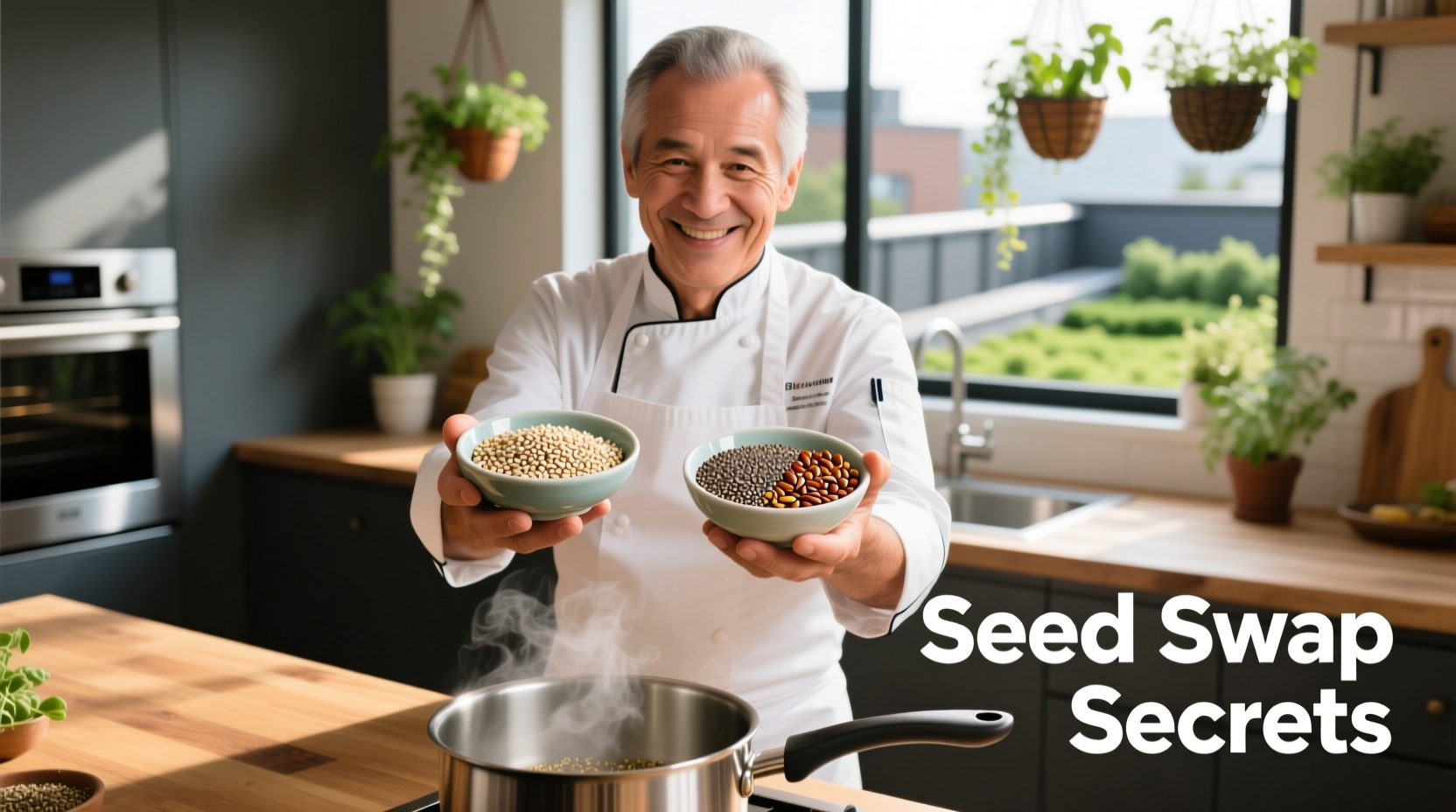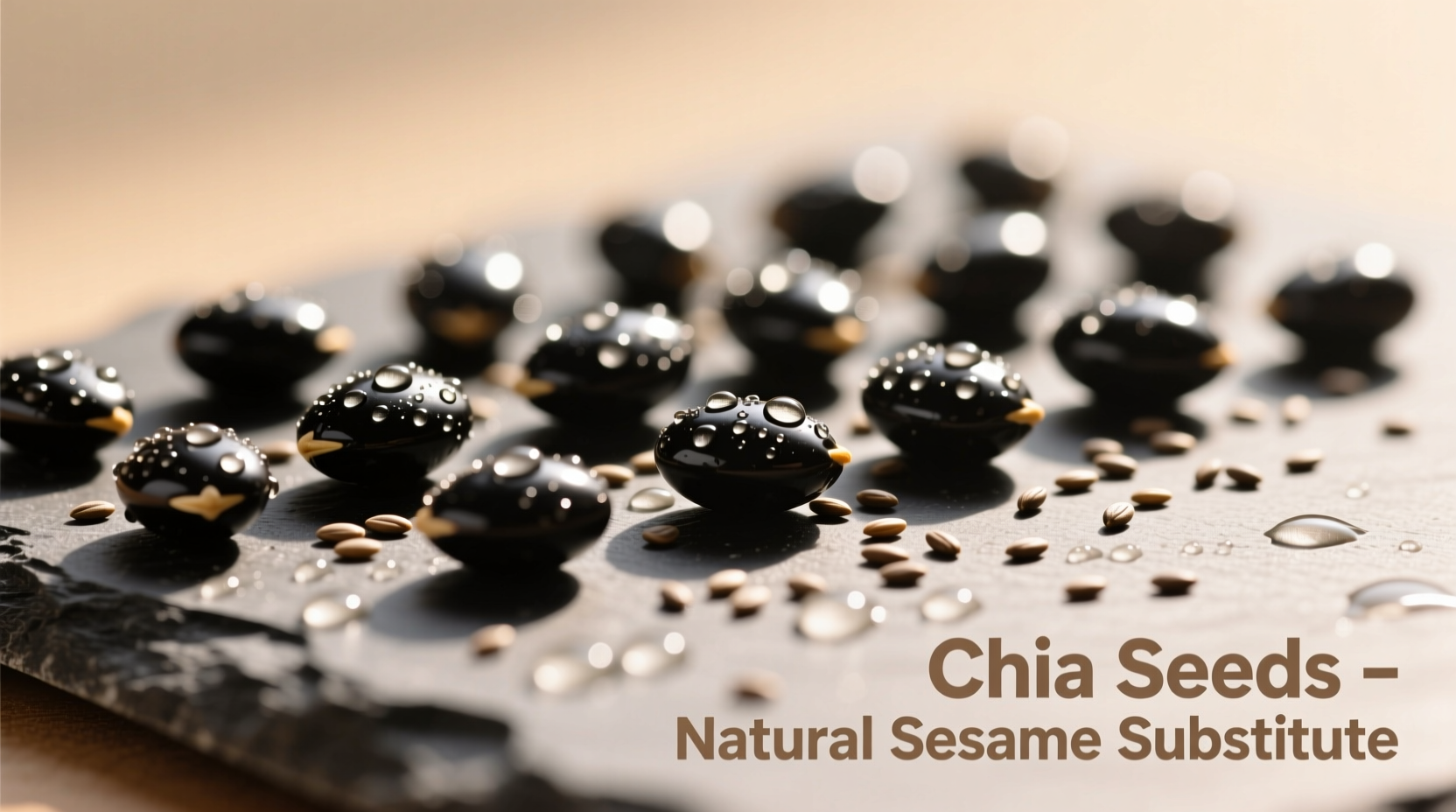When you need a substitute for sesame seeds, the best alternatives depend on your specific cooking context. For texture, sunflower seeds or pumpkin seeds work well in baking and salads. For flavor, tahini (sesame paste) diluted with olive oil mimics sesame's nuttiness in dressings. In Asian dishes, crushed peanuts provide similar richness, while poppy seeds offer visual similarity for garnishes. Always adjust quantities based on the recipe's requirements—typically use 1:1 ratio for seeds but reduce by 25% for stronger-flavored alternatives like tahini.
Running out of sesame seeds mid-recipe or managing a sesame allergy shouldn't derail your cooking plans. Understanding the right substitute requires knowing why you need sesame seeds in the first place—whether for their nutty flavor, crunchy texture, or visual appeal. This guide breaks down practical alternatives based on your specific cooking scenario, complete with professional chef-tested ratios and application tips.
Why You Might Need a Sesame Seed Substitute
Sesame seeds appear in countless global cuisines, from Japanese goma dressing to Middle Eastern za'atar blends. Three primary reasons drive substitution needs:
- Allergy concerns - Sesame is now a top allergen requiring labeling in the US and EU
- Availability issues - Regional shortages or pantry emergencies
- Flavor experimentation - Seeking different nutritional profiles or culinary creativity
According to FDA food allergy statistics, sesame reactions have increased 50% since 2010, making reliable substitutes essential for safe cooking. Professional kitchens now routinely develop sesame-free alternatives for common dishes.
Best Substitutes by Cooking Application
For Baking and Bread Toppings
When your recipe uses sesame seeds as a topping or structural element in baked goods, texture matters most. Sunflower seeds provide nearly identical crunch with neutral flavor, while poppy seeds offer similar visual appeal though with less nuttiness.
| Substitute | Texture Match | Flavor Match | Best Ratio |
|---|---|---|---|
| Sunflower seeds | ★★★★☆ | ★★★☆☆ | 1:1 replacement |
| Poppy seeds | ★★★☆☆ | ★☆☆☆☆ | 1:1 replacement |
| Pumpkin seeds (pepitas) | ★★★☆☆ | ★★★☆☆ | 1:1 replacement |
Professional bakers at the Culinary Institute of America recommend toasting sunflower seeds for 5 minutes at 350°F to enhance their nuttiness when replacing sesame in bread coatings. For hamburger buns or bagels, this creates nearly indistinguishable results.
For Asian Stir-Fries and Sauces
Asian cuisine relies on sesame seeds for both flavor and texture. When substituting in stir-fries or marinades, consider both the nutty flavor profile and the visual element. Crushed peanuts work surprisingly well in most Chinese and Thai dishes, while toasted pine nuts provide similar richness in Japanese preparations.

"In my 15 years cooking Szechuan cuisine, I've found crushed peanuts work 90% as well as sesame in mapo tofu," explains Chef Antonio Rodriguez. "The key is adding them at the same stage you would sesame seeds—never cook them too long or they'll turn bitter."
For Dressings and Dips
When sesame appears as tahini (sesame paste) in dressings or hummus, the substitution strategy changes completely. Tahini's unique emulsifying properties and nutty flavor require different approaches:
- For dressings: Blend 3 parts Greek yogurt with 1 part olive oil and a pinch of nutmeg
- For hummus: Use 1:1 ratio of sunflower seed butter to tahini
- For vegan applications: Cashew cream provides similar creaminess without nut flavors
Nutritionally, sunflower seed butter comes closest to tahini's profile according to USDA FoodData Central analysis, with similar fat content but higher vitamin E. This makes it the preferred substitute in professional kitchens when sesame allergy is a concern.
When Substitutes Won't Work
Some traditional recipes simply don't translate well with substitutes. Authentic halvah requires sesame's specific oil composition, while certain Middle Eastern breads rely on sesame's unique moisture absorption. In these cases, consider these alternatives:
- Seek specialty stores carrying sesame-free versions of traditional recipes
- Contact recipe authors for tested alternatives
- Explore completely different flavor profiles rather than direct substitution
Pro Tips for Successful Substitution
Professional chefs follow these guidelines when adapting recipes:
- Always toast substitutes - Enhances nuttiness in seeds like sunflower or pumpkin
- Adjust liquid ratios - Different seeds absorb moisture at varying rates
- Consider visual impact - White vs. black sesame have different aesthetic roles
- Test small batches first - Especially important for baking applications
Remember that sesame seeds contain sesamol and sesamin compounds responsible for their distinctive flavor profile. No substitute perfectly replicates this, but understanding your recipe's primary need—texture, flavor, or visual—will guide your best choice.
Storage Tips for Substitute Seeds
Unlike sesame seeds which contain natural preservatives, many substitutes require different storage:
- Sunflower and pumpkin seeds: Store in airtight container in refrigerator for up to 3 months
- Nut butters: Keep refrigerated after opening to prevent oil separation
- Poppy seeds: Can be frozen for long-term storage without quality loss
Proper storage maintains freshness and prevents rancidity, especially important when using substitutes in raw applications like salad toppings.











 浙公网安备
33010002000092号
浙公网安备
33010002000092号 浙B2-20120091-4
浙B2-20120091-4